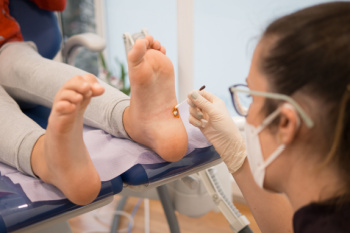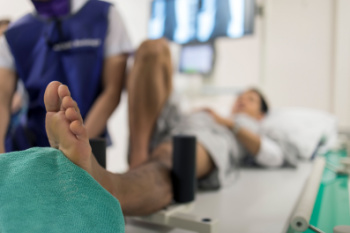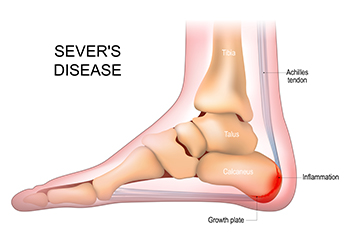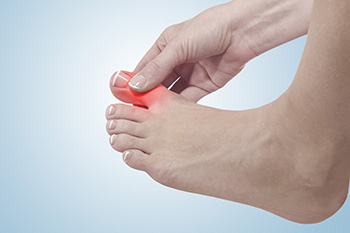
Plantar warts, though benign, are contagious and can be a source of discomfort for many individuals. These small, grainy growths typically develop on the soles of the feet, particularly in areas that bear weight such as the heel or ball of the feet. Plantar warts are caused by the human papillomavirus, or HPV, specifically strains that thrive in warm, moist environments. Plantar warts often enter the body through tiny cuts or breaks in the skin. Walking barefoot in public places like locker rooms, swimming pools, or communal showers can increase the risk of exposure to the virus. Additionally, individuals with weakened immune systems or compromised skin integrity are more susceptible to developing plantar warts. The pressure and friction exerted on the feet during walking can flatten plantar warts, causing them to grow inward and become painful. While plantar warts may resolve on their own over time, seeking treatment from a podiatrist can help alleviate discomfort and prevent them from spreading to other areas of the feet or to other individuals. If you have developed a plantar wart, it is suggested that you visit a podiatrist who can offer effective treatment solutions.
Plantar warts can be very uncomfortable. If you need your feet checked, contact one of our podiatrists from Foot Health Center of Merrimack Valley. Our doctors will assist you with all of your foot and ankle needs.
About Plantar Warts
Plantar warts are the result of HPV, or human papillomavirus, getting into open wounds on the feet. They are mostly found on the heels or balls of the feet.
While plantar warts are generally harmless, those experiencing excessive pain or those suffering from diabetes or a compromised immune system require immediate medical care. Plantar warts are easily diagnosed, usually through scraping off a bit of rough skin or by getting a biopsy.
Symptoms
- Lesions on the bottom of your feet, usually rough and grainy
- Hard or thick callused spots
- Wart seeds, which are small clotted blood vessels that look like little black spots
- Pain, discomfort, or tenderness of your feet when walking or standing
Treatment
- Freezing
- Electric tool removal
- Laser Treatment
- Topical Creams (prescription only)
- Over-the-counter medications
To help prevent developing plantar warts, avoid walking barefoot over abrasive surfaces that can cause cuts or wounds for HPV to get into. Avoiding direct contact with other warts, as well as not picking or rubbing existing warts, can help prevent the further spread of plantar warts. However, if you think you have developed plantar warts, speak to your podiatrist. He or she can diagnose the warts on your feet and recommend the appropriate treatment options.
If you have any questions please feel free to contact one of our offices located in North Andover, and Tewksbury, MA . We offer the newest diagnostic and treatment technologies for all your foot and ankle needs.




 Gout
Gout




